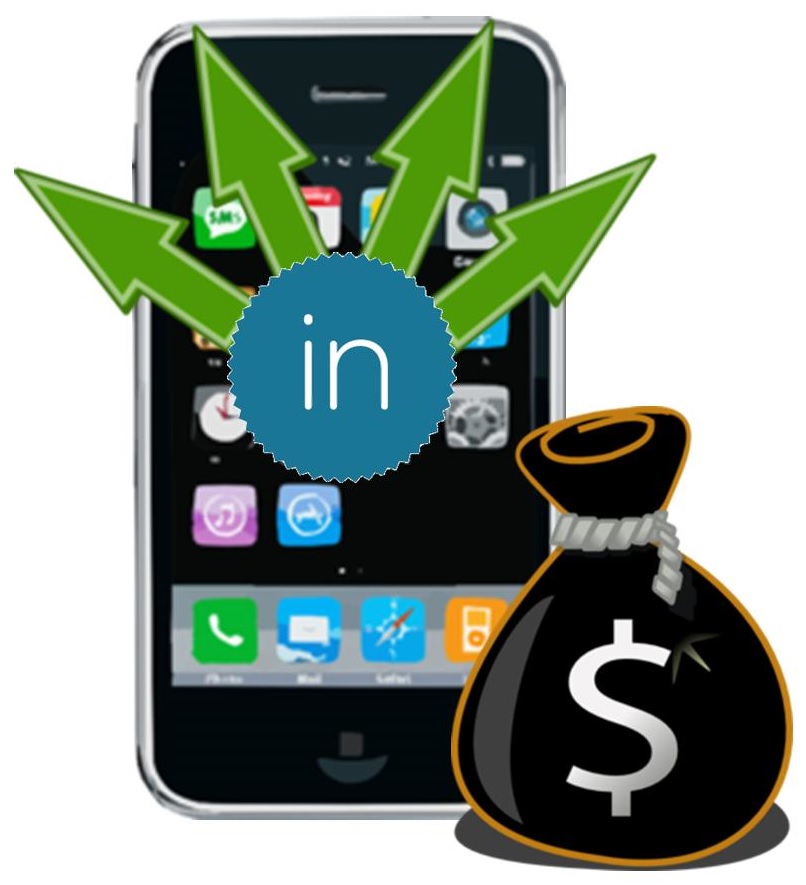This technology helps to take ads to a whole new level to boost interest and engagement from consumers.
It wasn’t that long ago that augmented reality technology was considered to be nothing more than a mobile marketing gimmick that would come and go within a very short period of time.
However, augmented reality is starting to prove that it is much more than a passing fad.
Mobile marketing has been taking a dramatic leap toward the use of technology and augmented reality has become a central component of that. It has proven itself to be engaging and functional and is continuing to play an ever increasing role in a number of different advertising and promotional campaigns. It has managed to hold its own as marketers seek out more complexity in their smartphone and tablet campaigns, as the penetration of these more high tech devices continues.
As advanced technology plays a more important role in mobile marketing, so will A.R.
 It had a bit of a confusing start, particularly as mobile marketing companies attempted to explain what, precisely, augmented reality is, to their customers and to consumers, as well. However, the tremendous potential for interactivity that the technology has shown to have has brought it to life. Consumers are engaged, and the experience of the campaigns has been considerably broadened through its use.
It had a bit of a confusing start, particularly as mobile marketing companies attempted to explain what, precisely, augmented reality is, to their customers and to consumers, as well. However, the tremendous potential for interactivity that the technology has shown to have has brought it to life. Consumers are engaged, and the experience of the campaigns has been considerably broadened through its use.
According to Snipp Interactive’s John D. Fauller, “Augmented reality is still very much in the experimental bucket for most brands, and most of the implementations so far are still gimmicky.” He added that “We’re starting to see more focused brand building campaigns using AR and eventually will start seeing truly utility applications using AR – that’s when you know it’s officially here to stay.”
That said, there are still some companies that continue their reliance on the gimmicky side of augmented reality for their mobile marketing campaigns. This is because they are new to the technology and they have not built up their repertoires in terms of how it can be used to its greatest potential. That will come with time as they gain a better understanding of what it is and how their customers can use it.
The social media network’s revamped application has been increasing user engagement in a meaningful way.
According to the latest data from LinkedIn, the recent overhaul of its app has been extremely effective in increasing mobile marketing and overall engagement from users during the 2013 second quarter.
The result of this achievement is that there have been record revenue outcomes for the network.
According to the LinkedIn CEO, Jeff Weiner, during the Q2 earnings call for the company, “Accelerated member growth and strong engagement drove record operating and financial results in the second quarter.” As of April of this year, LinkedIn had completely overhauled its mobile marketing and app experience for both iOS (Apple) and Android (Google).
Since the new mobile marketing and overall experience in the apps was created, engagement skyrocketed.
 The company explained that the changed apps have produced a mobile marketing and homepage engagement rate that is 40 percent greater than it was before the overhaul of the app. Moreover, when compared to the results that were being generated by the earlier version of the social network’s application, the article views, social actions, and mobile profile edits have increased considerably.
The company explained that the changed apps have produced a mobile marketing and homepage engagement rate that is 40 percent greater than it was before the overhaul of the app. Moreover, when compared to the results that were being generated by the earlier version of the social network’s application, the article views, social actions, and mobile profile edits have increased considerably.
Weiner commented last Thursday that “A more engaging mobile experience enhances the overall health of the LinkedIn platform.” Due to the successes of the apps and the engagement that it has generated, mobile has become the most rapidly growing service for that company.
At the same event, Weiner announced that in the second quarter, the average unique visiting members that were coming to the social network through the apps had averaged 33 percent. In 2012 at the same time, that figure had been 21 percent. This presents a considerably different mobile marketing opportunity for the company, as well as the chance to boost its revenues to a notable degree.
Assisted by stronger mobile marketing engagement, the revenue that LinkedIn saw over the second quarter for the year reached $363.7 million. This was a whopping 59 percent greater than the figure from a year before, which was $228.2 million. At the time of the writing of this article, there were approximately 238 professionals connecting through the network, across 200 nations and regions around the globe.
 It had a bit of a confusing start, particularly as mobile marketing companies attempted to explain what, precisely, augmented reality is, to their customers and to consumers, as well. However, the tremendous potential for interactivity that the technology has shown to have has brought it to life. Consumers are engaged, and the experience of the campaigns has been considerably broadened through its use.
It had a bit of a confusing start, particularly as mobile marketing companies attempted to explain what, precisely, augmented reality is, to their customers and to consumers, as well. However, the tremendous potential for interactivity that the technology has shown to have has brought it to life. Consumers are engaged, and the experience of the campaigns has been considerably broadened through its use.
 The company explained that the changed apps have produced a mobile marketing and homepage engagement rate that is 40 percent greater than it was before the overhaul of the app. Moreover, when compared to the results that were being generated by the earlier version of the social network’s application, the article views, social actions, and mobile profile edits have increased considerably.
The company explained that the changed apps have produced a mobile marketing and homepage engagement rate that is 40 percent greater than it was before the overhaul of the app. Moreover, when compared to the results that were being generated by the earlier version of the social network’s application, the article views, social actions, and mobile profile edits have increased considerably.